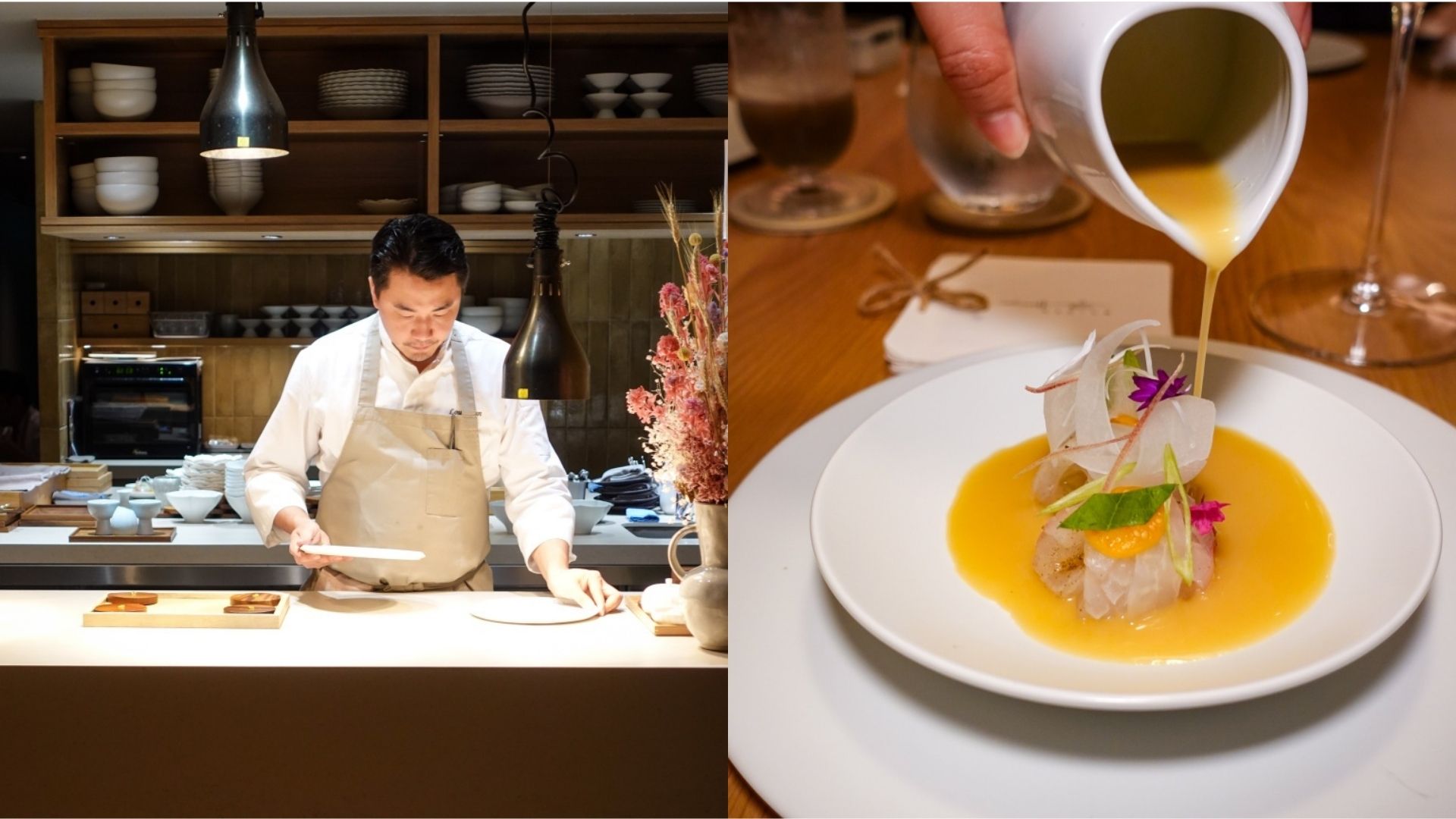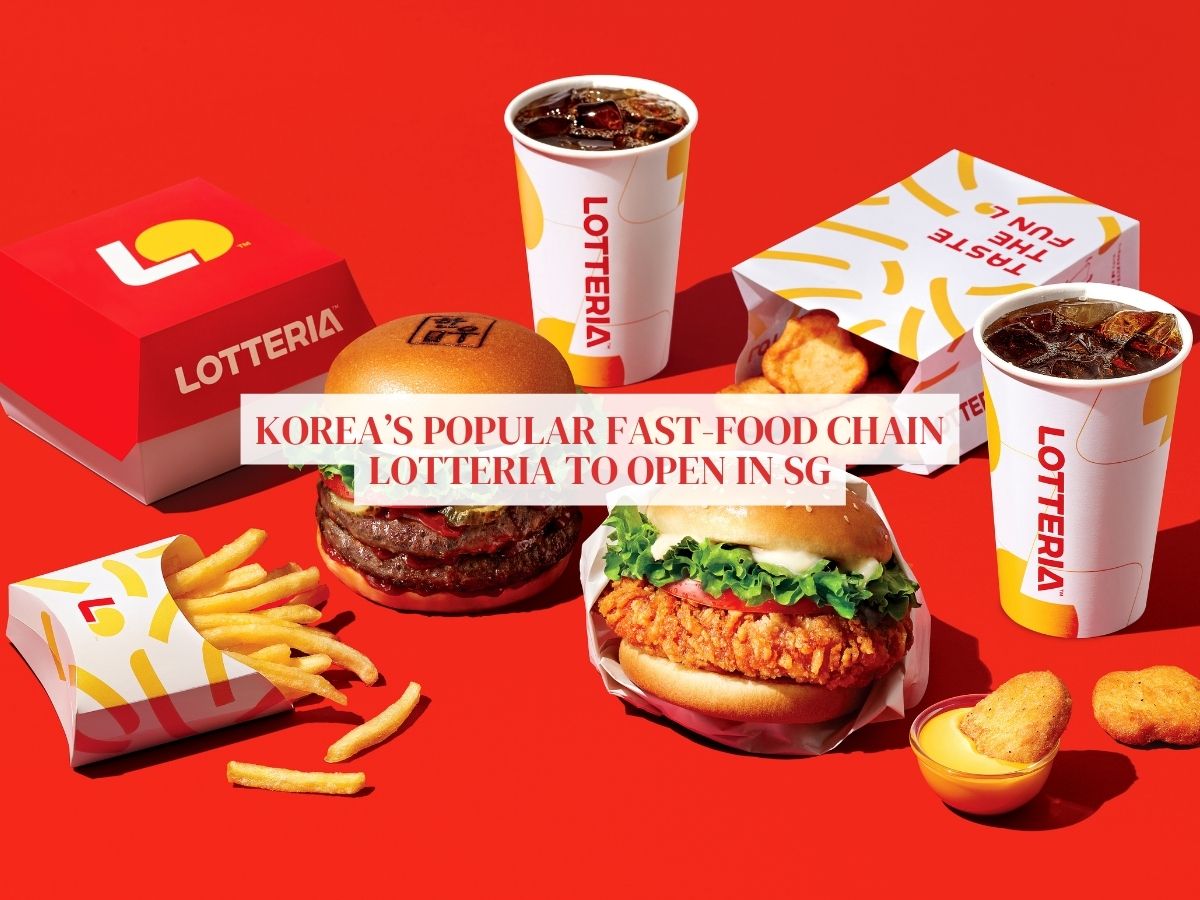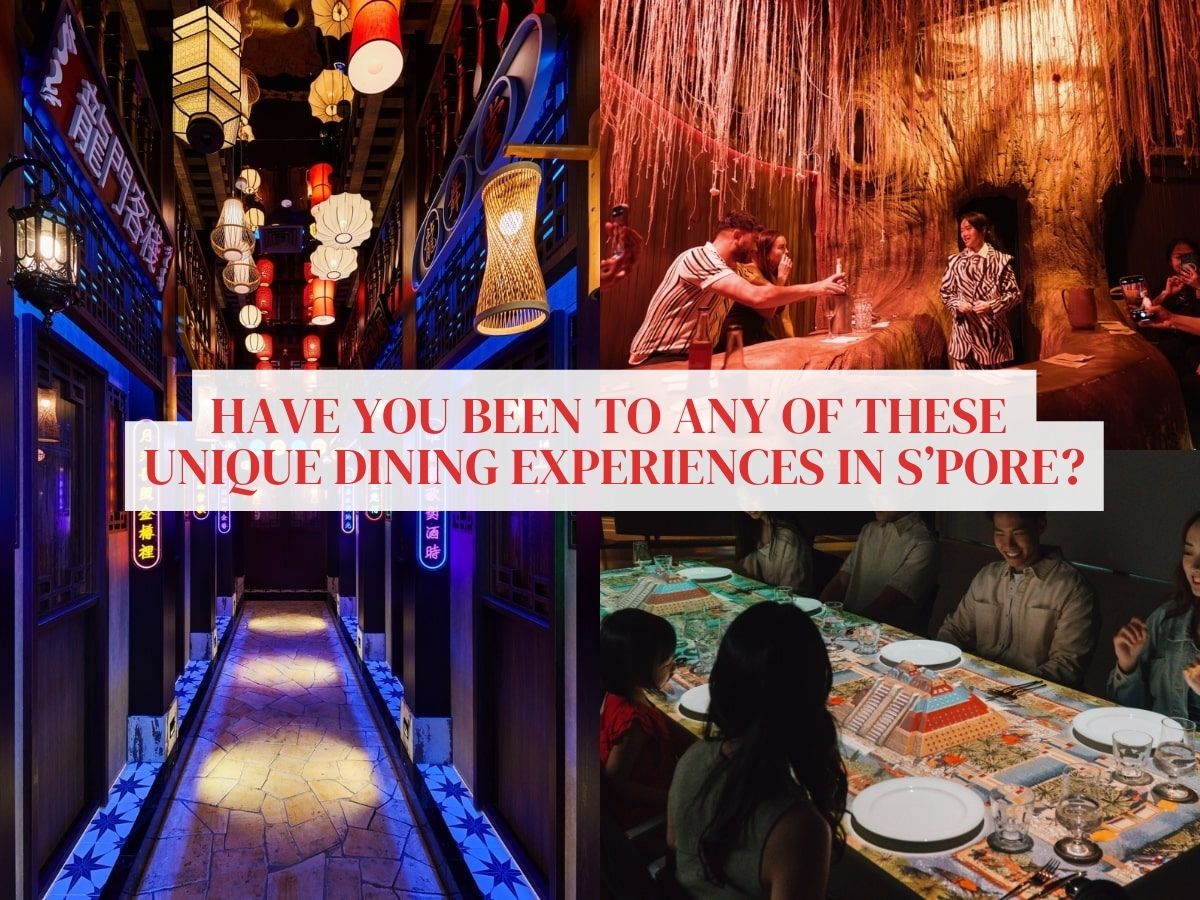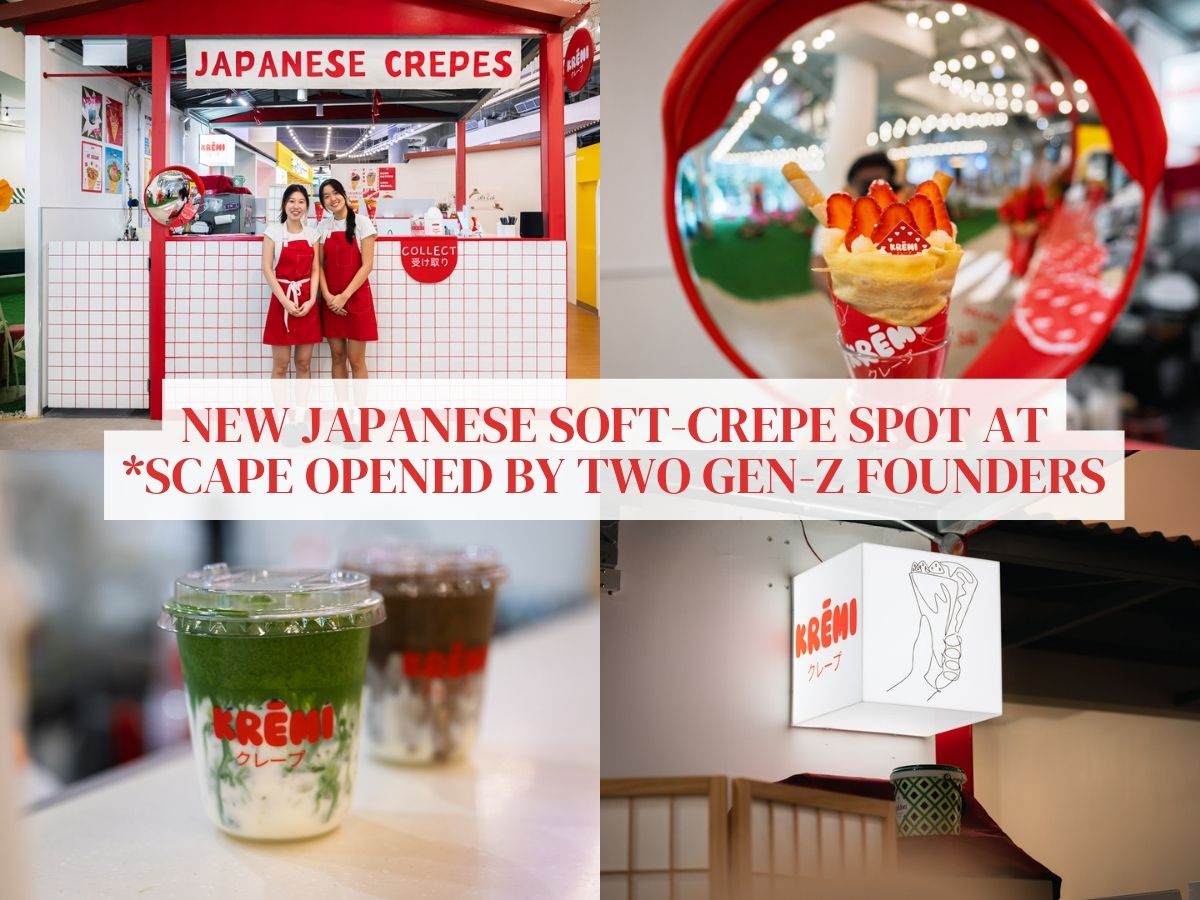Michelin one-starred Nae:um returns with a new menu and look — here’s our take
Hot on the heels after retaining its one-star status at this year’s Michelin Guide Singapore, contemporary Korean restaurant Nae:um is back with a new look and a new menu.
Following a two-month revamp, the restaurant reopened in end-August, announcing that it had begun a “new story”, not just a chapter or an episode.
In its four-year history at Telok Ayer, chef-founder Louis Han introduced a grand total of nine episode-based menus. He also opened the more casual Gu:um at nearby Keong Saik, as well as Hideaway, a private dining space tucked above Nae:um.
While previous menus at Nae:um showcased snippets of chef Louis’ life, this version — which he dubs Nae:um 2.0 — is a culmination of his journey to date.
This evolution is clear, right from the moment you enter its space.
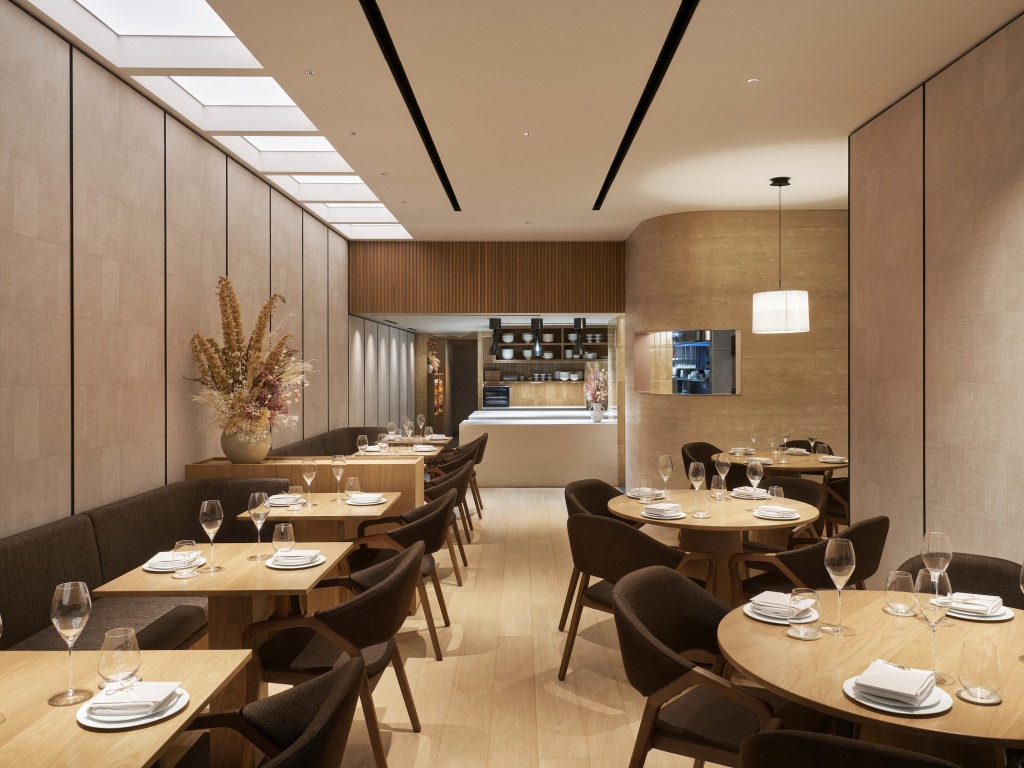
While beige and wooden accents still dominate the space, Nae:um 2.0 is markedly more chic, refined, and minimalist, almost like the restaurant has “grown up” into its elevated one-star status.
It’s not a bad thing at all — guests get more space (it now sits 24, down from 28 previously) and privacy, as well as the chef’s whole story told on the plate (as opposed to episodic snippets), within eight courses in its Signature Moments menu, at the same price of S$268.
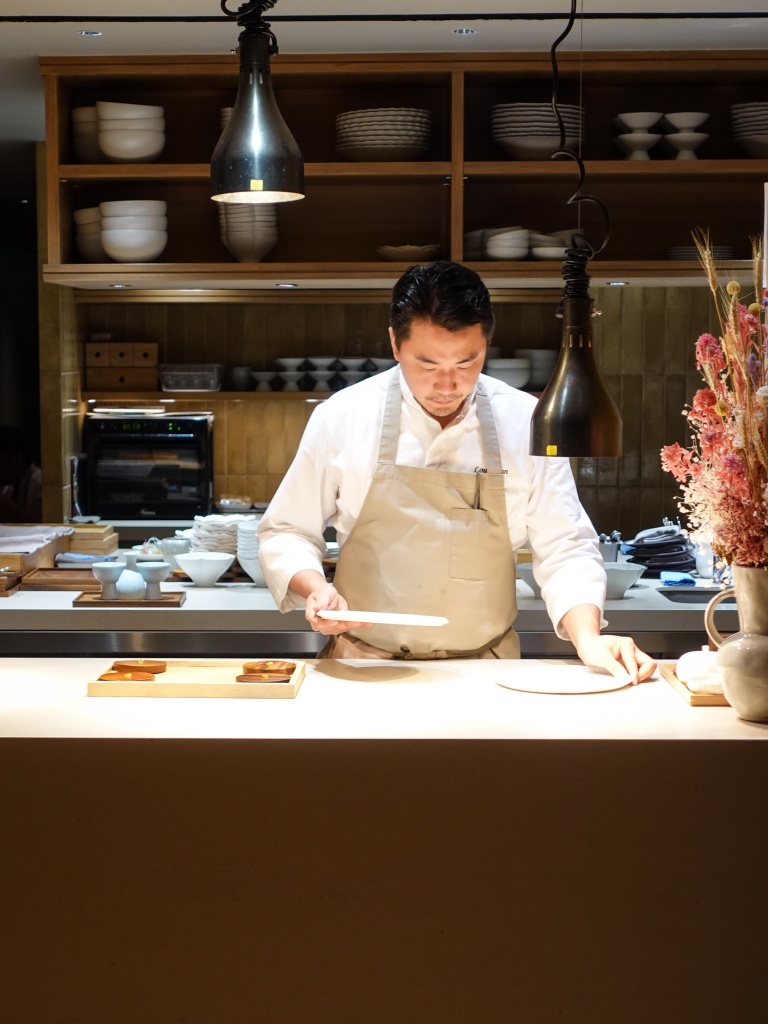
Much like its previous episodes, the menu is also available in an abbreviated five-course format at lunch, now titled Brief Moments (S$198). It previously also had a six-course version for dinner, but this is no longer available.
But it’s all for good reason — you get a fuller, more comprehensive version of how chef Louis wants to tell his story through his dishes, with no shortcuts.
Exploring Nae:um 2.0’s menu
At the start of the meal, guests receive a small booklet with watercolour illustrations, as well as a simple retelling of moments in chef Louis’ culinary journey.
It’s compact, but offers personable tidbits, such as the time when chef Louis had purchased a foot-long shawarma when working as a penniless cook in Abu Dhabi, and stretched it across three meals.
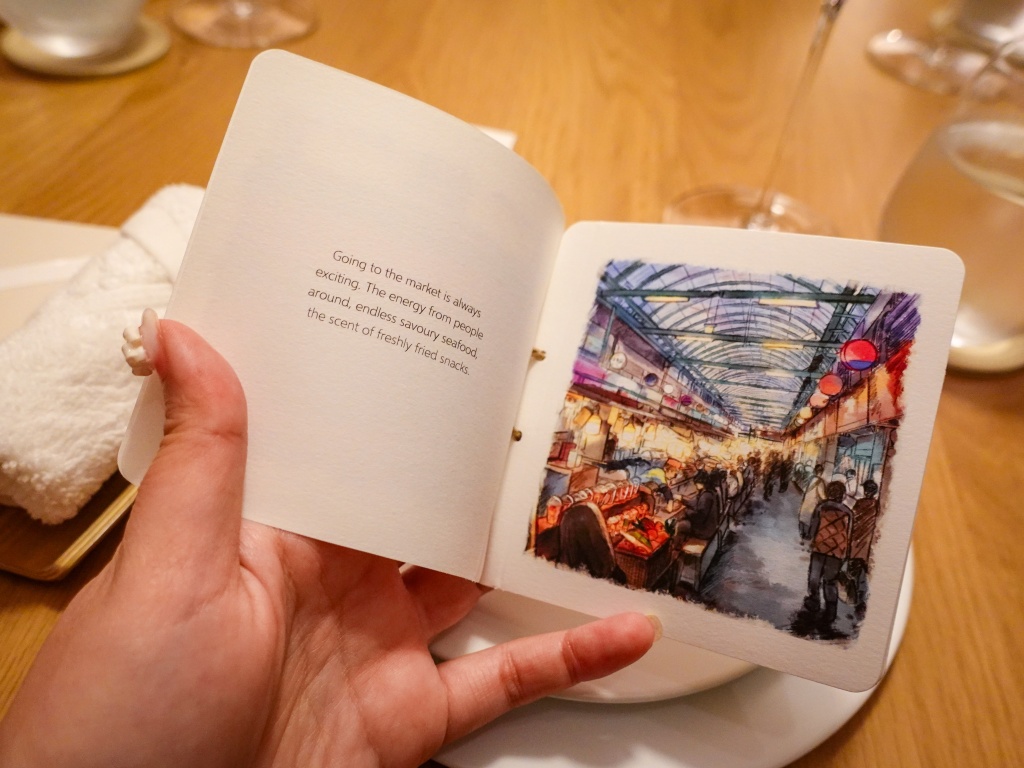
In line with the illustrations, each ensuing plate is presented in an exquisite manner that alludes to its Korean influences, but with touches of artistry and beauty that amplifies the dining experience.
Take for example, the first welcome drink — the dongchimi — is a take on the Korean radish water kimchi, featuring chilled tomato dongchimi broth, clarified tomato jelly, an Amela tomato, and raw seafood.
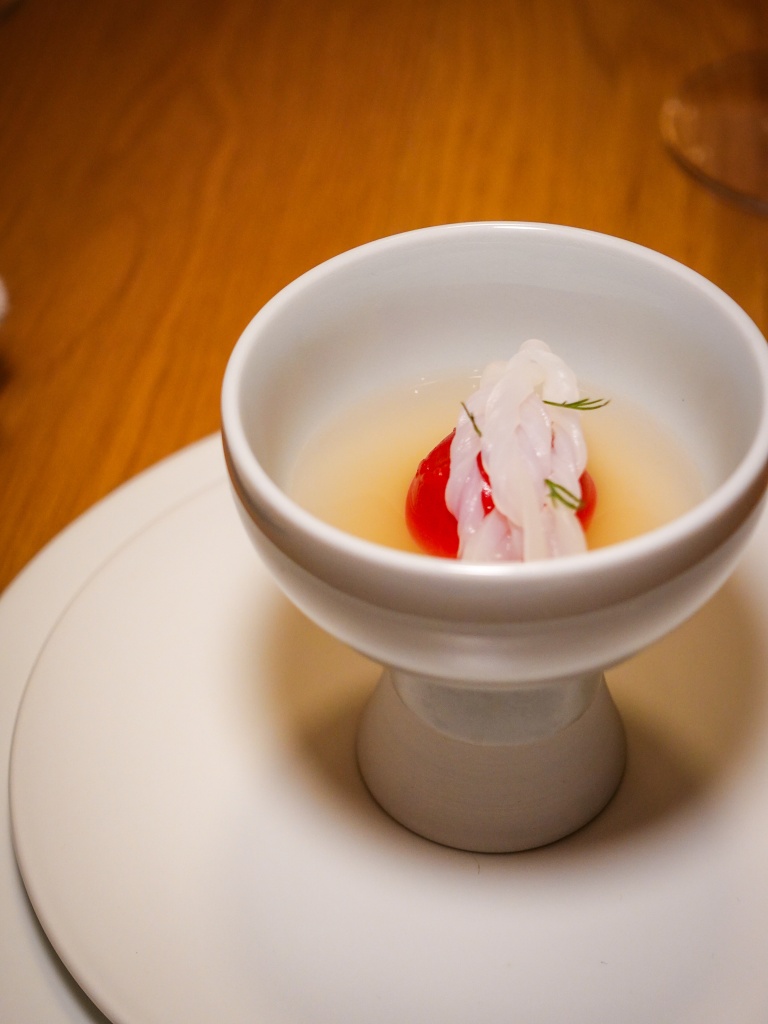
This dish is usually quite uneventful and is said to help with digestion, but small touches such the addition of seafood, served as an intricate braid, help make this starter memorable from the get-go.
The meal then picks up speed with a trio of snacks, which all come seemingly innocuous and simple, but pack loads of flavour within a bite.
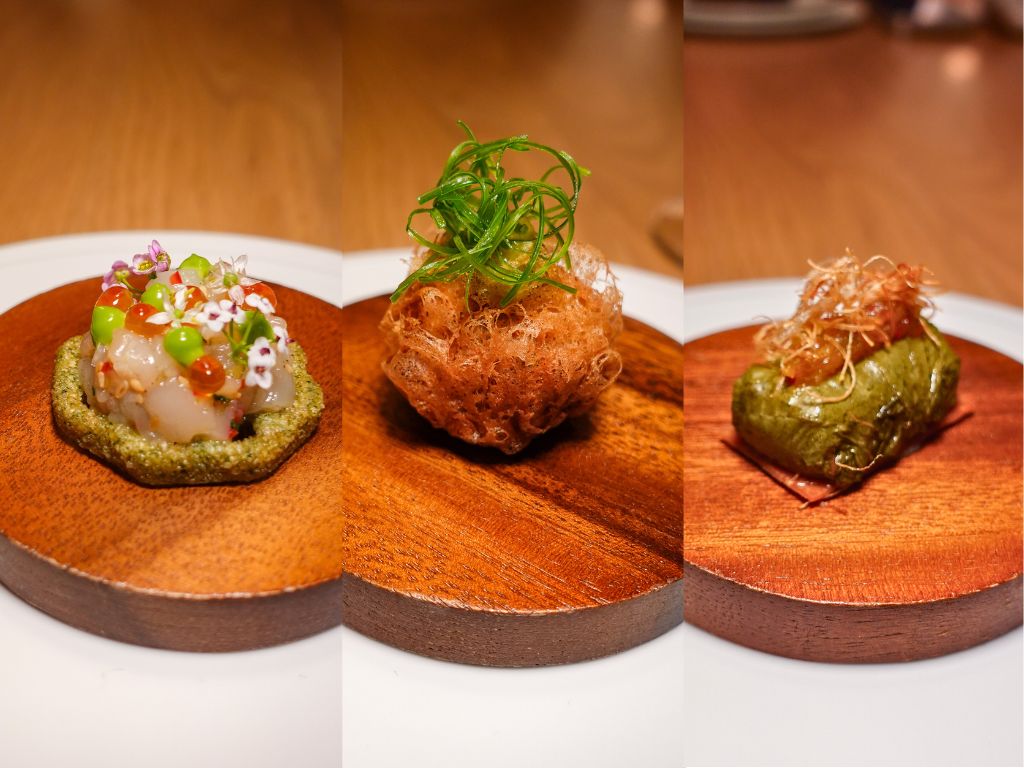
There’s gwanja (marinated raw scallop on a crispy seaweed cracker), toran (pork ragu with fermented black bean sauce in a yam puff), and sokkori (braised oxtail and potato, wrapped in a perilla leaf, served on a cracker).
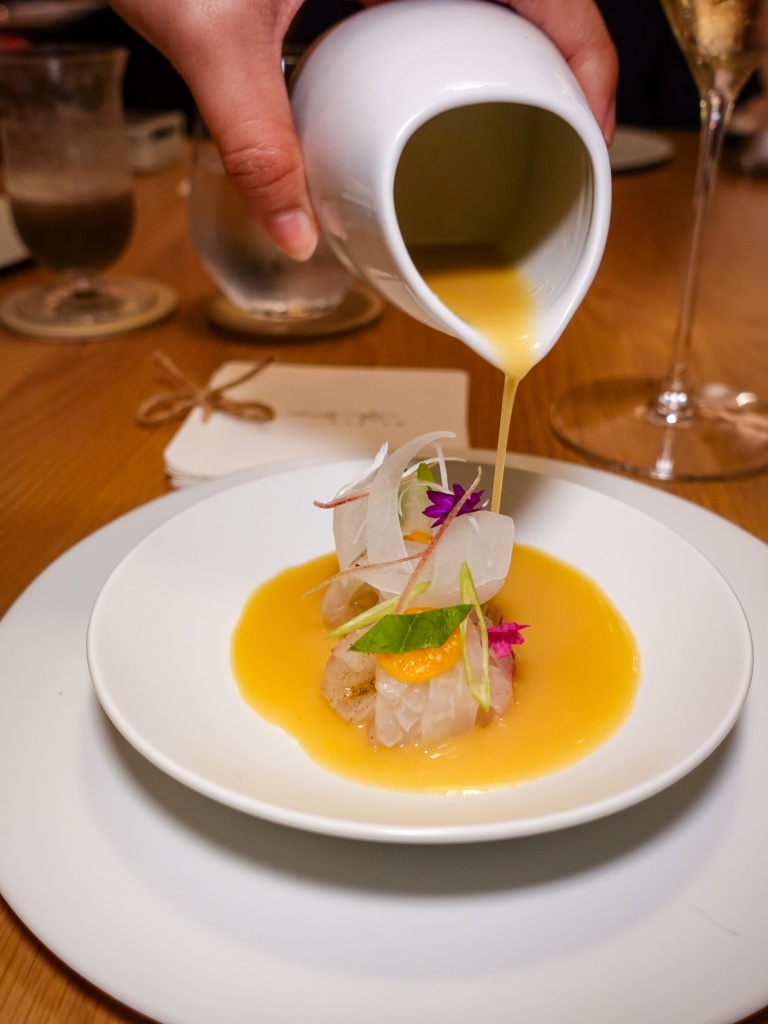
This intensity eases and lands comfortably into the bright domi, which features seabream served in a lemon-soy vinaigrette, as chef Louis gives you a taste of what a trip to Korea’s popular East Sea (or Donghae) region would feel like.
Longtime fans of Nae:um would recognise the next course, the memilmyeon & mandu, which features perilla and sesame oil-tossed buckwheat noodles, layered with a cured tobiko sauce. It is served alongside a morel stuffed with a grilled duck meat patty (reminiscent of a tteokgalbi, or a grilled beef short rib patty), finished on the grille and glazed with gochujang.

It combines two of Nae:um’s most popular dishes to date, and is also a throwback of sorts to chef Louis’ memories of enjoying noodles at his family home,which is located on the periphery of Seoul.
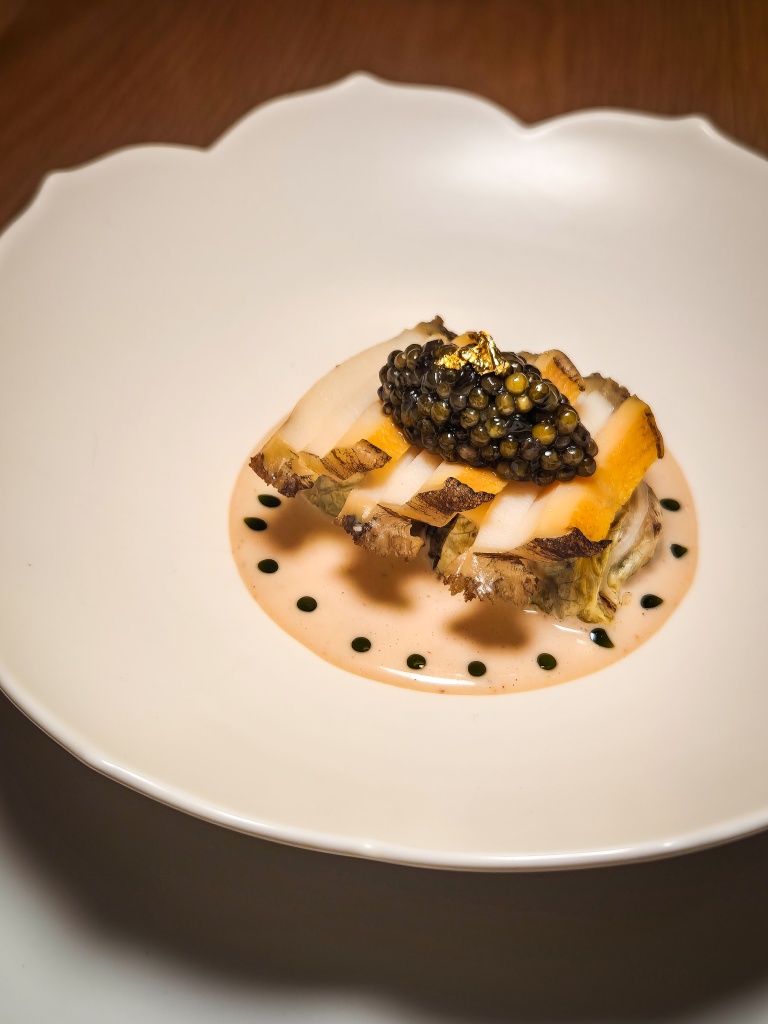
The next few dishes are punchier — there’s the jeonbok, which features Jeju abalone on a grilled napa cabbage wrap, topped with Oscietra caviar, served in a light yet creamy pine nut cream, and a grilled iberico ribeye with a side of garlic chives and perilla-layered onion, but the most memorable one of the lot has to be the nobchi.
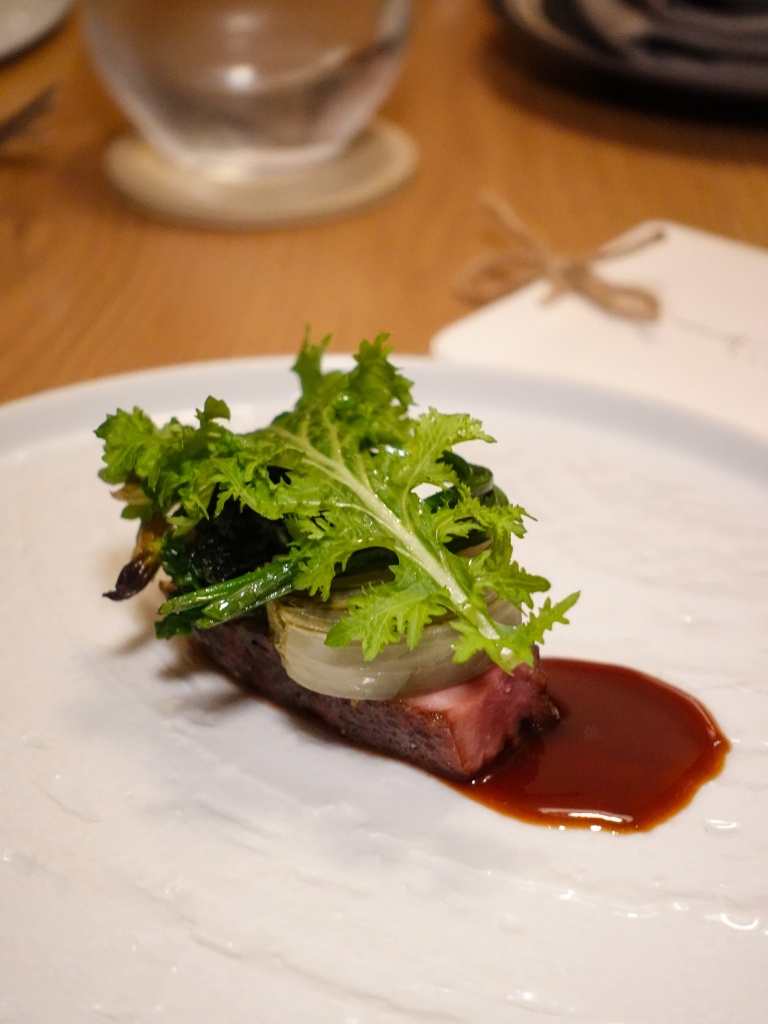
With fish being chef Louis’ favourite ingredient, this course may see different iterations as he works with different types of fish.
Our nobchi was a pan-seared five-day dry-aged turbot with sauteed Korean squash, and a maeuntang-inspired butter sauce. (Maeuntang is a spicy Korean fish stew, often enjoyed after a raw fish meal.)
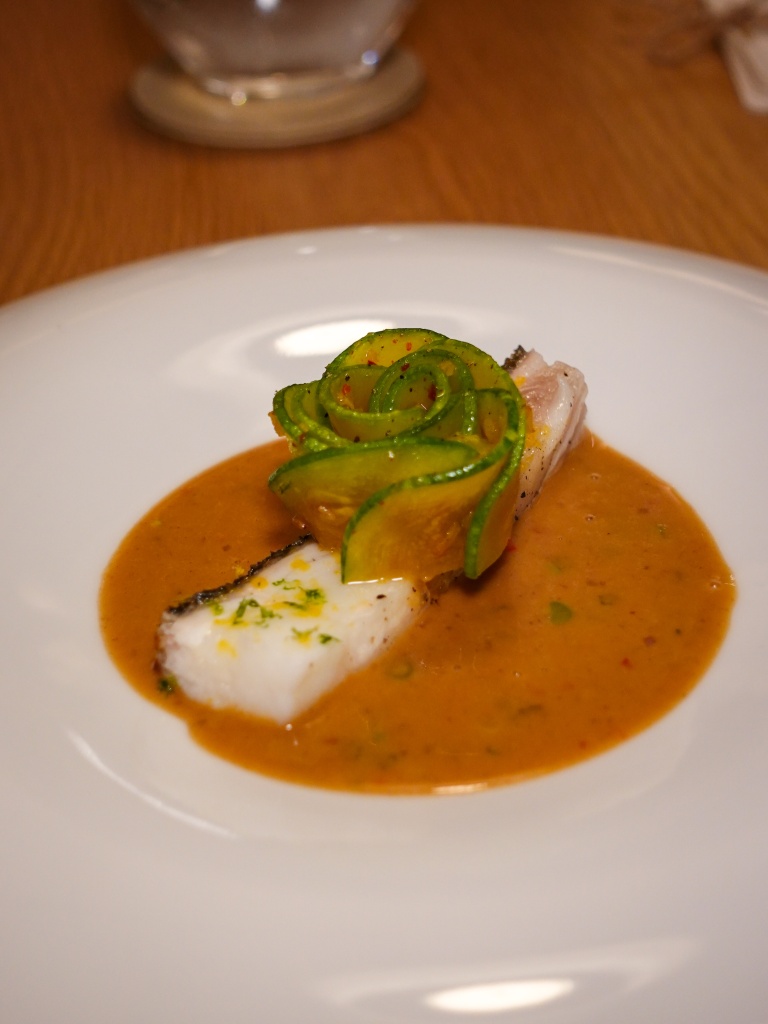
Unlike chef Louis, I’m not usually a big fan of cooked fish, but the dry-aged turbot was so impeccably milky and tender, while the spicy sauce was so robust and flavourful that I mopped everything up.
If I’m being honest, the sauce tasted more like a hearty seafood bisque than a maeuntang, and it’s remarkable that such depth in flavour is achieved with just fish, vegetables, butter and gochugaru (chilli flakes). It just shows chef Louis’ strength with the ingredients.
The mains end with a hansang, a spread with rice topped with grilled deodeok (a Korean root vegetable), some side dishes, as well as a clear soup.
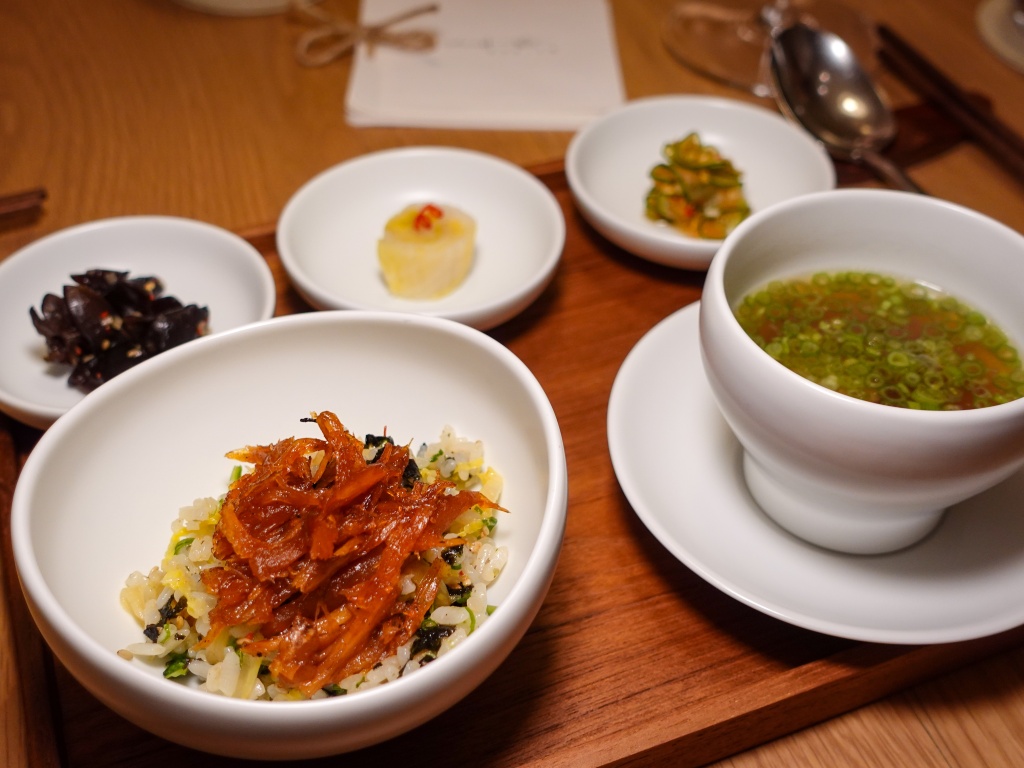
Everything here tastes homely, and the vegetable-focused clean finish neatly concludes the protein-packed mains we had earlier.
On my last visit to Gu:um, I remembered being awed by chef Louis’ sweet potato dessert, and had high hopes for the dessert courses — thankfully, this expectation held up.
In particular the darae changmyeon stood out. The dessert is a modern take on the Korean sweet starch noodle soup, topped with a kiwi sorbet and lemongrass foam. Refreshing and bright, with just the right amount of tang, it reminded me of the earlier domi course, but sweeter.
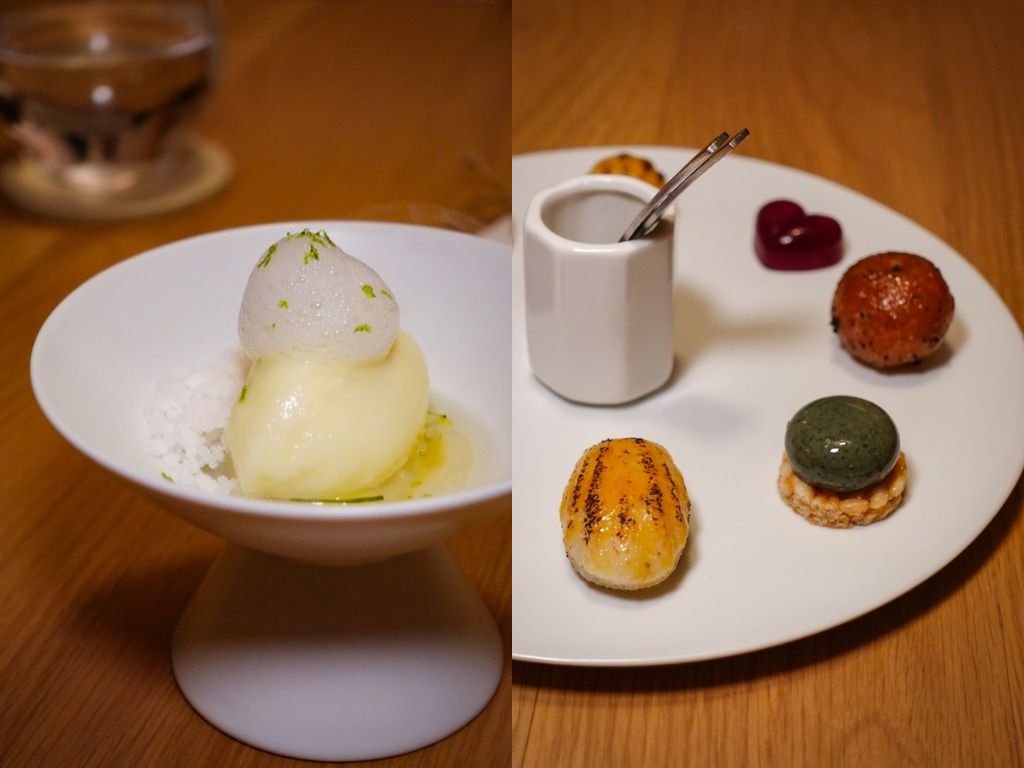
Honestly by now, I thought I’d be bursting at the seams, but I somehow manage the daechu — an elevated reprise of one of Nae:um’s well-loved desserts — with date pastry cream, a jujube truffle espuma, white chocolate ice cream, and freshly shaved black truffles, and even the petit fours — a selection of dagwa, or traditional Korean sweets.
You can opt to enjoy your meal with a full six-glass pairing (S$188) or a half with three glasses (S$108), with a selection of wines and Korean beverages. However, surprisingly for someone who loves her Korean alcohol with the fare, I found myself too engrossed with the finer details of chef Louis’ meal and its flavours to even think about the pairings.
It was perhaps apt then, that I had gotten these decisions out of the way at the start, with a very crisp and clean-tasting Ari Ari yakju (S$34 for a glass, S$118 for a bottle) from a small-batch distillery in Gyeonggi-do, just slightly outside of Seoul.
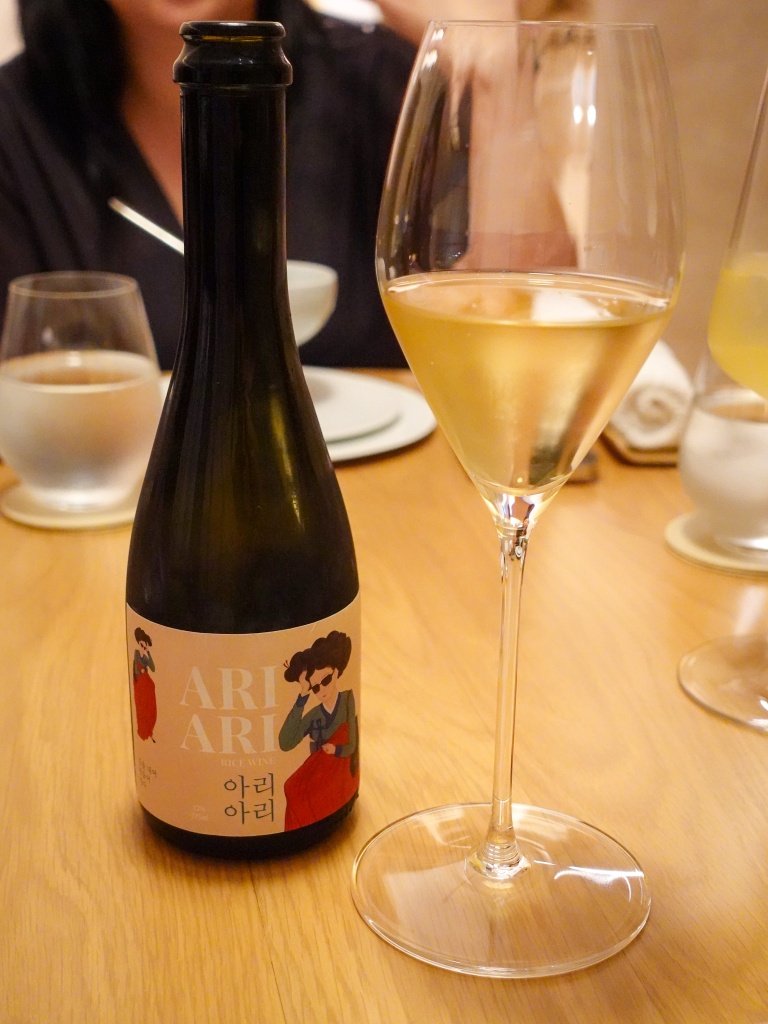
Nae:um’s sommelier Ocean Kang, who hails from Suwon, Korea, and has led the beverage programme since 2023, is also ready with recommendations whether you’d prefer red, whites, bubblies, or even Korean rice wines.
Whatever your choice, drink or none, you’d be well-taken care of throughout your meal by chef Louis, Ocean, and its attentive crew — all of whom move with such precision, elegance, and care.
You’ll feel elements of jeong (a Korean concept that alludes to warm feelings of care and love), all throughout the meal, and it’s also these small, intangible touches that have me already thinking about my next meal at Nae:um.
EDITOR’S NOTE: An earlier version of the article mentioned that the welcome dongchimi drink contained chilli oil, however HungryGoWhere understands that the dish has been updated and no longer contains this.
This was a hosted tasting.
For more eats around town, check out La Vache!, a new spot serving up Parisian steak frites, as well as Chip Bee Bistro, started by the co-founder of the popular PS Cafe.
Wed 6pm - 10.30pm
Thurs 12pm - 3pm, 6pm - 10.30pm
Fri 12pm - 3pm, 6pm - 10.30pm
Sat 12pm - 3pm, 6pm - 10.30pm
- Telok Ayer
- Tanjong Pagar
